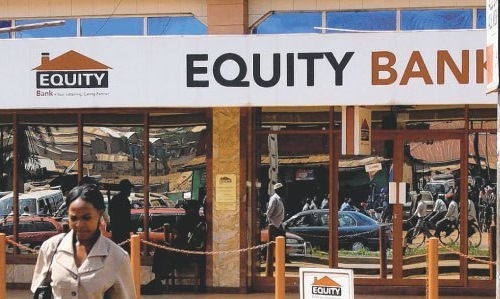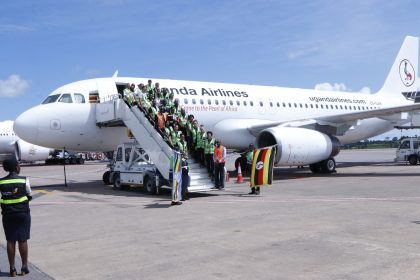Equity walks tried and tested path to deliver solid half-year

Regional lender Equity Group maintained strong underlying growth during the first half of 2023, despite a spike in the cost of income, surging inflation and weakened currencies relative to the USD, in the markets it operates in.
The lender told investors this week that the loan book expanded 26pc, and yields on loans remained flat at 12.1pc. This was despite a 35pc spike in the cost of funding in “a macro-economic environment characterized by high inflation, interest rates and a strengthened US Dollar against local currencies that has hit the economies and the customers hard.”
Pursuing a strategy that was validated during the Covid-19 pandemic, Equity instead chose to “stand by and cushion its customers while keeping on the lights of the economies it operates in.”
Lending increased from Kshs 673.9 billion to Kshs 845.9 billion, providing customers the flexibility to restructure their businesses and adapt to the shifts in the macro economy.
“Picking the lessons and insights from the Covid-19 global health pandemic when the Group saved thousands of households, micro, small and medium enterprises by giving them loan repayment breaks and rescheduling 45pc of its loan book, the Group determined that the macro-economic shocks occasioned by the rise in interest rates, inflation and depreciation of local currencies required transferring and mitigating from transmission of the entire impact on households and enterprises. The Group chose to moderate the inflation impact, by absorbing the effect of inflation in its operational cost, while at the same time absorbing the rise in interest rate on deposits and debt without transferring the full effect to the customers,” said group chief executive Dr. James Mwangi.
While interest expense on funding from deposits and long-term debt grew by 58pc in tandem with the high cost of funding, top line interest income grew by 32pc and net interest income growing by 21pc. Speaking while releasing the results during the Group’s 3rd Quarter 2023 investor briefing, Mwangi said, it was a strategic decision by the group to support and cushion its customers to fortify their opportunities for survival during the turbulent economic environment by absorbing part of the funding costs by cutting yields on loans and government securities at almost the same level at 12.1pc and 11.5pc respectively”.
“We grew our loan book by 26pc despite the uncertainty of difficult economic times to ensure our customers continued to fund their dreams while keeping the lights of the economy on. We did not hesitate in making this strategic decision to focus on supporting our customers to navigate and survive the difficult and challenging microeconomic environment as this aligns to our true north, our purpose to change lives, give dignity and expand opportunities for wealth creation. It was an easy strategic choice to focus on the long-term resilience of our customers’ success,” added Dr. Mwangi.
Net interest income grew 21pc, while non-funded income grew at 38pc to achieve a 28pc growth in total income. Total costs grew by 47pc as the Group opted to absorb the impact of global and regional inflation and depreciation of local currencies that saw staff expenses grow by 33pc. While the cost of funding and deposits rose by 35pc and total operating costs increased by 47pc, yields on loans increased by 7pc only to level out at 12.1pc. Loan loss provision grew by 107pc from Kshs 8.6 billion to Kshs 17.7 billion to strengthen the NPL provisions coverage buffers. Consequently, profit after tax grew by 5pc to Kshs. 36.2 billion up from Kshs. 34.4 billion.
“The long-term strategic pursuit of geographical expansion and diversification continues to deliver impressive results. Group deposits grew by 20pc to Kshs. 1,208.6 billion up from Kshs. 1,007.3 billion with Kenya contributing 51pc while the subsidiaries weighed in at 49pc growth driven by deposit growth of 28pc in DRC, 32pc in Uganda, 39pc in Rwanda and 56pc in Tanzania.”

 Brussels Airlines to announce Nairobi service
Brussels Airlines to announce Nairobi service
 SITA promises enhanced travel experience after Materna acquisition
SITA promises enhanced travel experience after Materna acquisition
 Saudia’s 105 aircraft order stretches A320neo lead over rival Max
Saudia’s 105 aircraft order stretches A320neo lead over rival Max
 Boeing refuses to pay hackers $200 million for stolen Data
Boeing refuses to pay hackers $200 million for stolen Data
 Uganda-Tanzania announce date for second joint business forum
Uganda-Tanzania announce date for second joint business forum
 Uganda Airlines leased A320 arrives in Entebbe
Uganda Airlines leased A320 arrives in Entebbe
